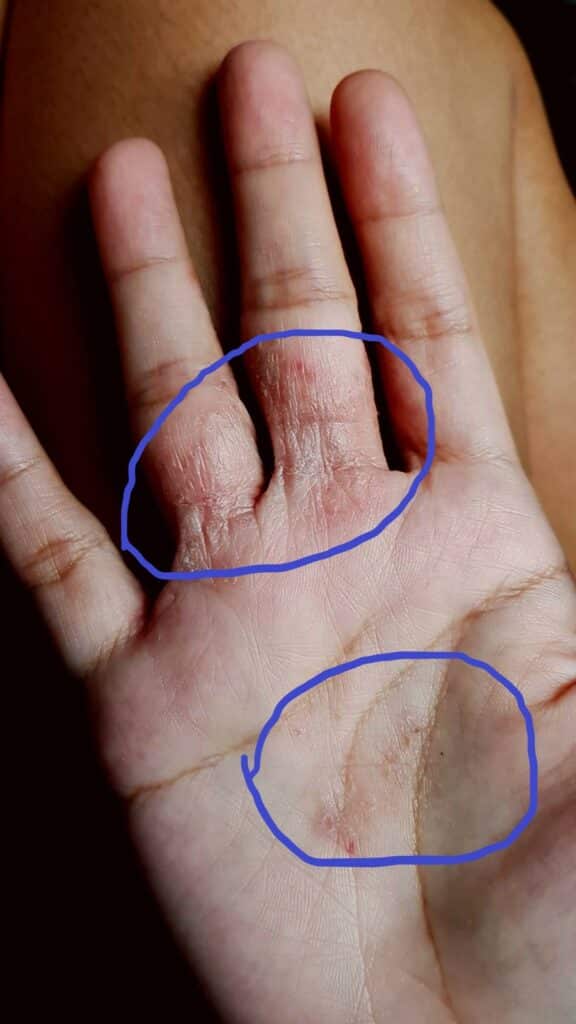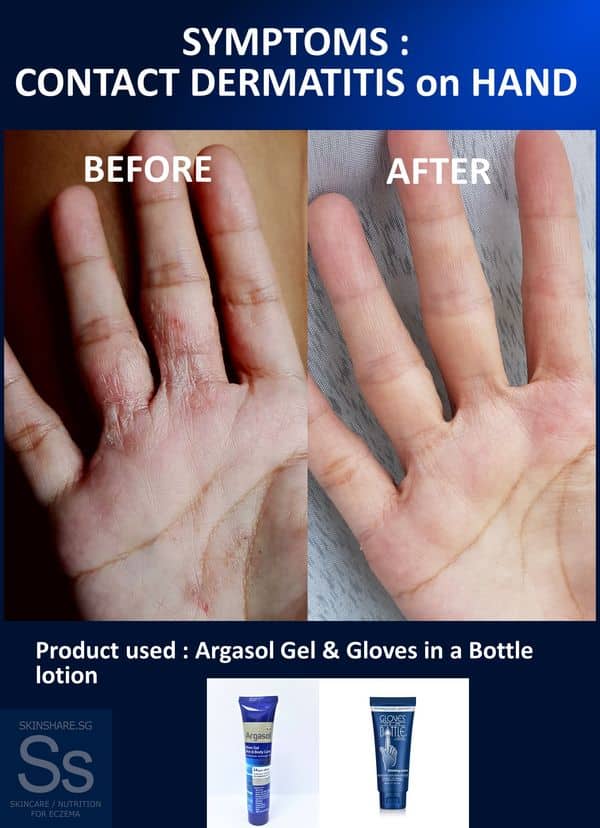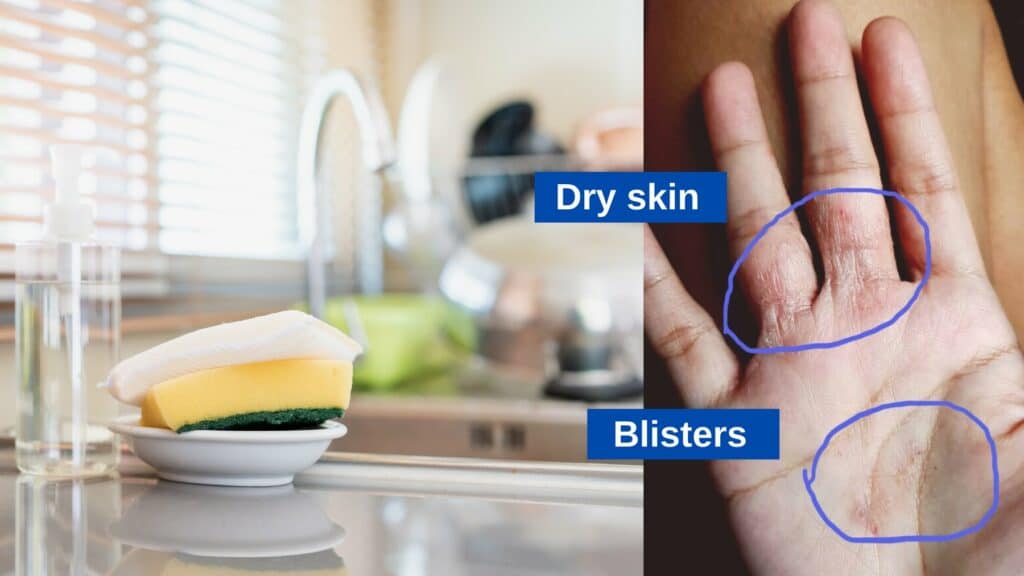We received a query from a frustrated housewife on how to prevent her contact dermatitis from flaring up.
She does housework daily and cares for two young children, but she has developed dry, cracked hands. And, sometimes small tiny blisters will appear on her fingers and palms. This has been happening for months. She visited a skin doctor and was told that she had contact dermatitis.
“My skin doctor said I have contact dermatitis. Before this, I was never sensitive to anything.”
What is contact dermatitis?
Contact dermatitis happens when the skin comes into contact with an external irritant. This could be soaps and detergents, perfumes, or household cleaning products. That’s why it can commonly occur on the hands. This condition may develop as we age, and with constant contact with the irritants.
As a result, the skin around the fingers and palms become very dry and develop blisters. The skin may start to crack and bleed. The cracked skin will further aggravate the condition.
“I was prescribed topical medication like steroids. It worked for awhile, and the problem went away. But once I stopped using it, my hands became dry and cracked again. I also changed my soaps and detergents, and wore gloves when doing housework, but it still didn’t work. The pain is unbearable at times.”
How to treat eczema blisters on my hands?

For blisters and cracks, they have to be treated with a mild antiseptic that is suitable for eczema skin like Argasol silver gel or Germolene antiseptic. This prevents infection from happening.
Once the blisters and cracks have closed up, but the skin is still dry (as shown in the photo above), you may use a suitable eczema cream to treat flareups on the red areas. Repeat the application twice a day after cleansing your hand.
To protect hands, you can wear a comfortable eczema glove to aid with healing at night and to prevent scratching.
How to prevent more flareups from recurring?
The best prevention for contact dermatitis is to identify what you are allergic to and prevent direct contact with it. However, since we use our hands for most of our daily activities, it is really tough to identify the allergen.
A skin prick test can help to identify the allergen. Skin prick tests are available at some dermatologists or public hospitals by referral basis. However, most skin doctors may not recommend it at the first visit. There are simply too many allergens to test at one time, and testing for every single one may be too costly. It may be better to do skin prick test once you have narrowed down your list of allergens.
How to protect my hands when doing housework?
Alternatively, a more practical way to help protect the skin is to use a “shielding lotion” on your hands. As the name suggests, shielding lotions create a barrier to protect the skin from exposure to allergens. At the same time, they also prevent the skin from drying out, so it acts similar to a moisturiser.
We recommend her to apply a shielding lotion known as Gloves in a Bottle every day, since she comes into contact with water, detergent and dust regularly. It’s light and fast absorbing so it does not interfere with her daily activity. It can be reapplied every 6 hours to provide good constant protection.
When doing dry work, wear eczema bamboo gloves as additional protective barrier. For wet works, you can also wear a rubber glove over the eczema gloves to avoid contact with latex.
Avoid using wet wipes and harsh sanitizers on the wounded skin. Instead, you can use Argasol silver gel as it also has antimicrobial properties to eliminate bacteria and most viruses.
How long will my hands take to heal?
We have seen others who experienced an improvement after one to two weeks. And, after one month, their hands were almost back to normal.
The rate of healing will also depend on how long you have been using topical steroids before this. The longer you have been using them, the longer your recovery may take.
After your skin returns to normal, you can continue to apply the shielding lotion, but you may not need to wear eczema gloves as often.

Have a question?
Want to #AskSkinsharesg? We will do our best to help! Post your question in Instagram and hashtag #AskSkinsharesg. Or, visit skinshare.sg and send us a question using the live chat (click the “Need Help” button at the bottom right). Frequently-asked questions may be posted on our blog to help others (we won’t reveal any real names).

